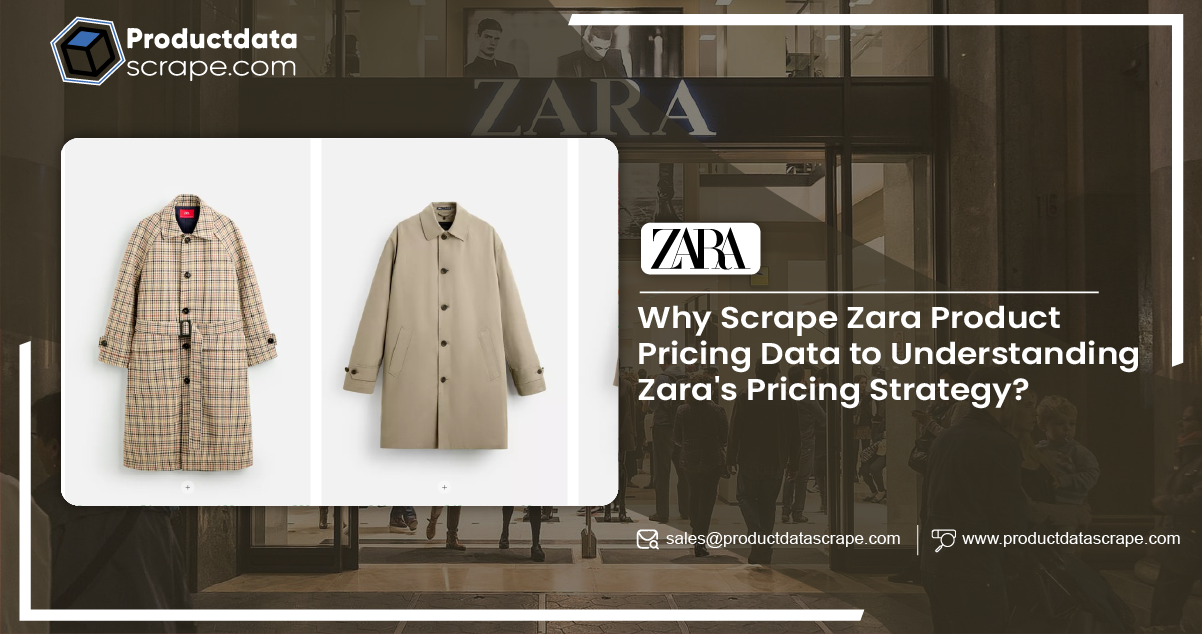
In today's fast-paced fashion industry, data-driven decision-making has become imperative for brands seeking a competitive edge. One key aspect that can significantly influence a brand's market position is its pricing strategy. Zara, a leading global fashion retailer under the Inditex umbrella, is renowned for its unique pricing and product turnover approach. This article delves into the intricacies to scrape Zara product pricing data and analyzing it. By leveraging techniques like web scraping Zara product prices, brands can gain valuable insights into how these prices reflect Zara's overall market positioning, customer perception, and strategic goals. Additionally, understanding Zara product price monitoring can help evaluate how the brand adjusts its pricing in response to market trends and consumer demands, ultimately enhancing its competitiveness in the ever-evolving fashion landscape.
The Importance of Pricing Strategy in Fashion Retail
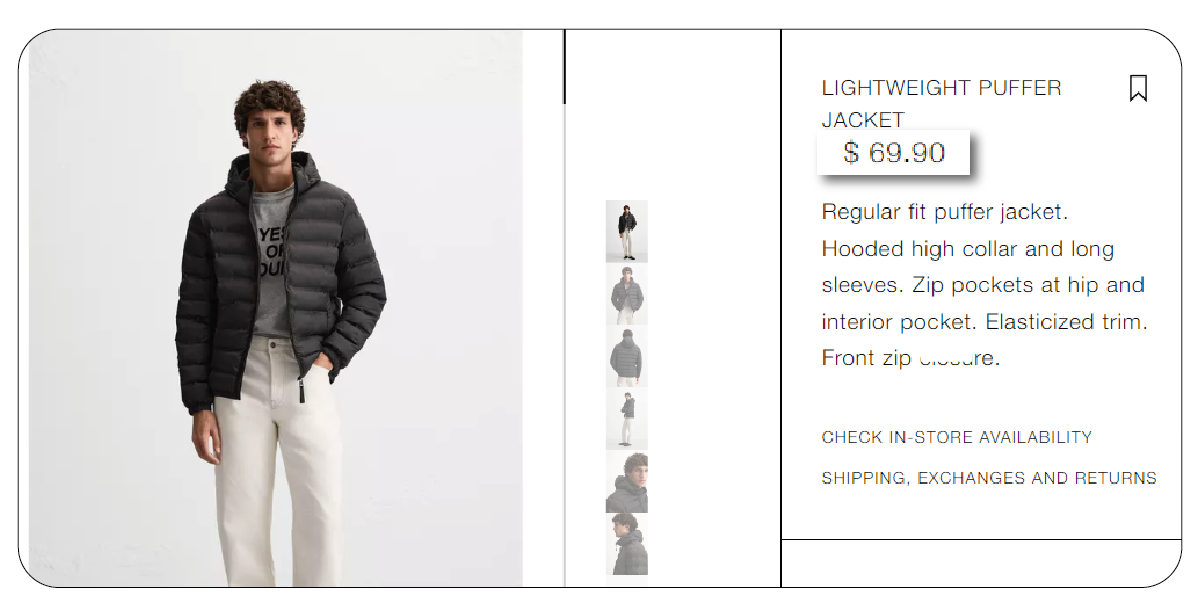
Pricing strategy is crucial to any business model, particularly in the fashion retail sector, where consumer preferences can shift rapidly and unpredictably. A well-structured pricing strategy influences consumer behavior and significantly impacts brand perception and overall sales performance. In the fashion industry, where margins can be thin and competition fierce, understanding pricing dynamics is essential for sustaining profitability and achieving long-term success.
Zara's pricing strategy is often characterized as a blend of psychological, competitive, and value-based pricing. This multifaceted approach allows Zara to appeal to a diverse consumer base while maintaining its market position. By understanding Zara's pricing strategy, stakeholders can glean valuable insights into how pricing influences consumer engagement and shapes market positioning.
Furthermore, Zara's price data collection is vital in promoting these strategies. By regularly gathering and analyzing pricing information, Zara can adapt its offerings to meet changing consumer demands. This adaptability is further enhanced by the ability to extract Zara product pricing data, enabling a more profound analysis of market trends and competitor pricing. Collectively, these strategies reinforce Zara's reputation as a leader in the fast fashion industry, illustrating the importance of a robust pricing framework in driving business success.
The Role of Data in Pricing Strategy
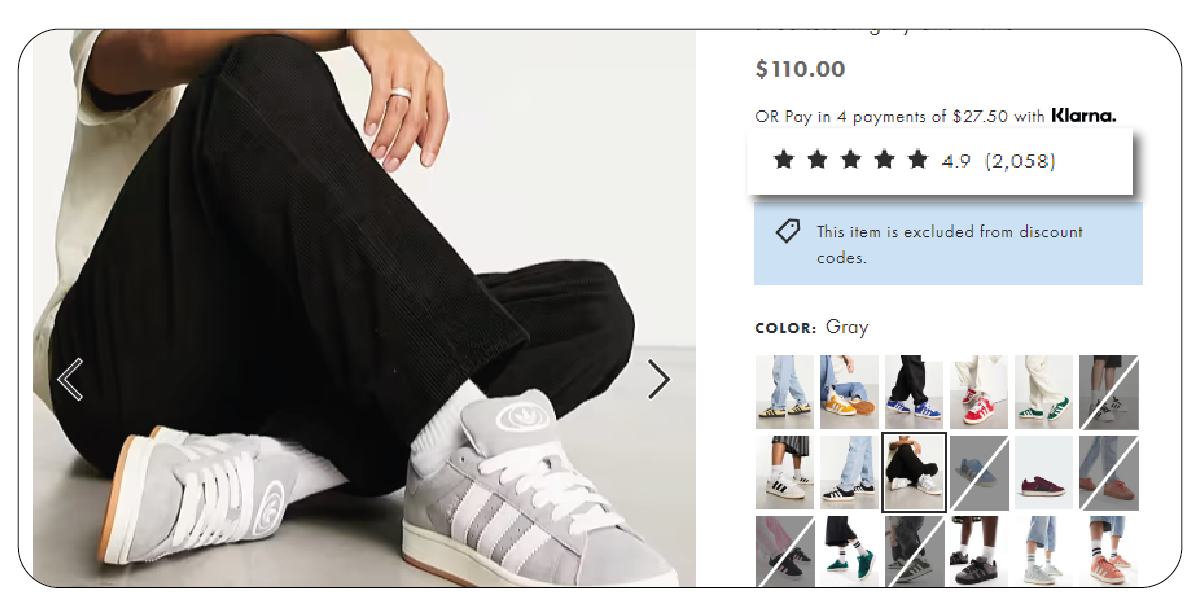
Data shapes pricing strategies across various industries, particularly fashion retail. Retailers like Zara collect vast amounts of data, ranging from consumer behavior insights to broader market trends, which empowers them to make informed decisions that align with their strategic goals. By employing effective techniques such as web scraping, Zara can access real-time pricing data, enabling analysts to observe patterns, identify diverse pricing models, and understand how prices fluctuate across different product categories.
Analyzing Zara's price distribution helps comprehend how the brand positions itself in a highly competitive market. Utilizing tools like a Zara pricing data scraper allows for extracting comprehensive pricing information, facilitating a deeper dive into the various aspects of Zara's pricing strategy. This process supports Zara product trends collection, where analysts can track how different product categories respond to market shifts and consumer preferences over time.
Moreover, web scraping for Zara price analysis enhances the capability to spot emerging trends and seasonal changes in pricing, providing a clearer picture of how Zara adjusts its pricing strategy in response to market fluctuations and competitive pressures. Analysts can identify critical trends that reveal the brand's adaptability and responsiveness by examining product price distributions, ultimately contributing to Zara's ongoing success in the fast fashion industry.
Zara's Pricing Model: An Overview
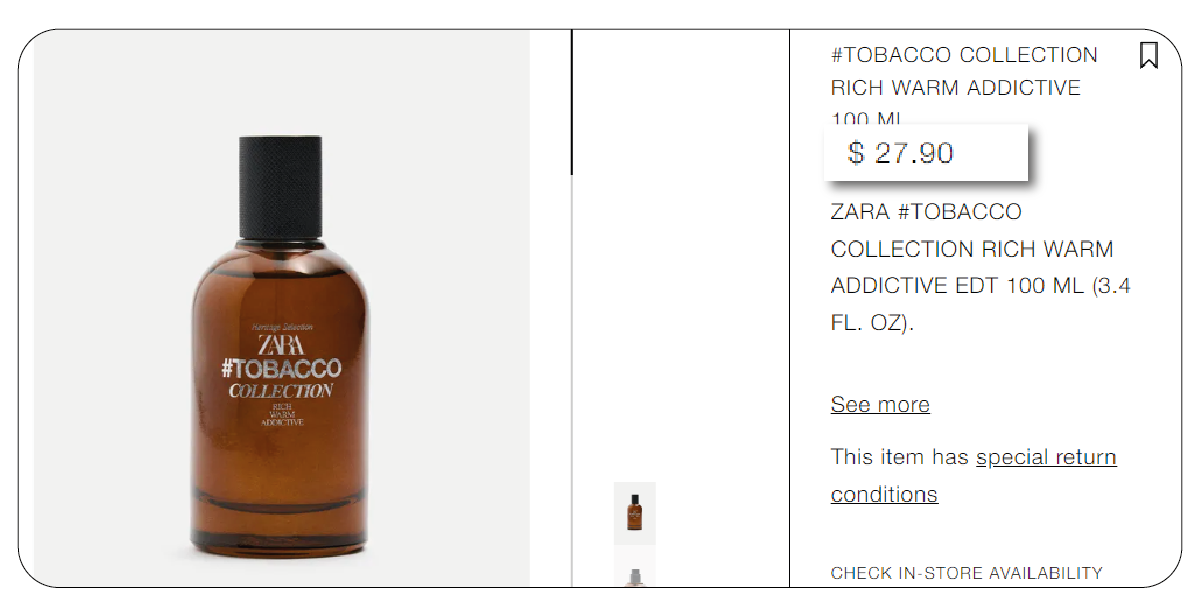
Zara's pricing model is notably unique. It seamlessly combines fast fashion principles with strategic pricing tactics, allowing the brand to thrive in a dynamic retail environment. Unlike traditional retailers that may adhere to fixed pricing structures, Zara employs a flexible pricing strategy that can change based on various factors, including inventory levels, consumer demand, and prevailing market trends. This adaptability is essential for staying relevant in a competitive landscape.
1. Competitive Pricing: Zara operates in a highly competitive environment where numerous fashion retailers constantly vie for consumer attention. Zara regularly analyzes competitor prices to maintain its edge and adjusts its pricing accordingly. By positioning its products competitively, Zara attracts cost-conscious consumers and effectively retains its market share against rivals. The ability to perform real-time Zara price extraction ensures that the brand is always aligned with market dynamics, allowing for timely adjustments that keep it ahead of the competition.
2. Psychological Pricing: Zara often employs psychological pricing tactics, such as setting prices just below whole numbers (e.g., $29.99 instead of $30). This pricing approach can create a perception of more excellent value, enticing consumers to make purchases they might otherwise hesitate to complete. Additionally, limited-time offers and promotions can further enhance this psychological effect, driving urgency in consumer buying behavior. By employing techniques to extract Zara trending product pricing data, the brand can analyze how these psychological tactics impact sales and customer engagement, refining its strategies.
3. Value-Based Pricing: Zara's pricing strategy also reflects its commitment to reasonably priced quality products. The brand carefully considers the perceived value of its items, ensuring that prices align with consumer expectations. This value-based approach fosters brand loyalty, as customers feel they receive quality merchandise for their investment. Zara often uses methods to scrape product data to optimize this strategy, allowing the brand to continually assess how well its pricing aligns with market demands and customer preferences.
Through these strategic pricing methods, Zara effectively navigates the complexities of the fashion retail landscape, ensuring it remains a leading choice for consumers worldwide.
Analyzing Product Price Distribution
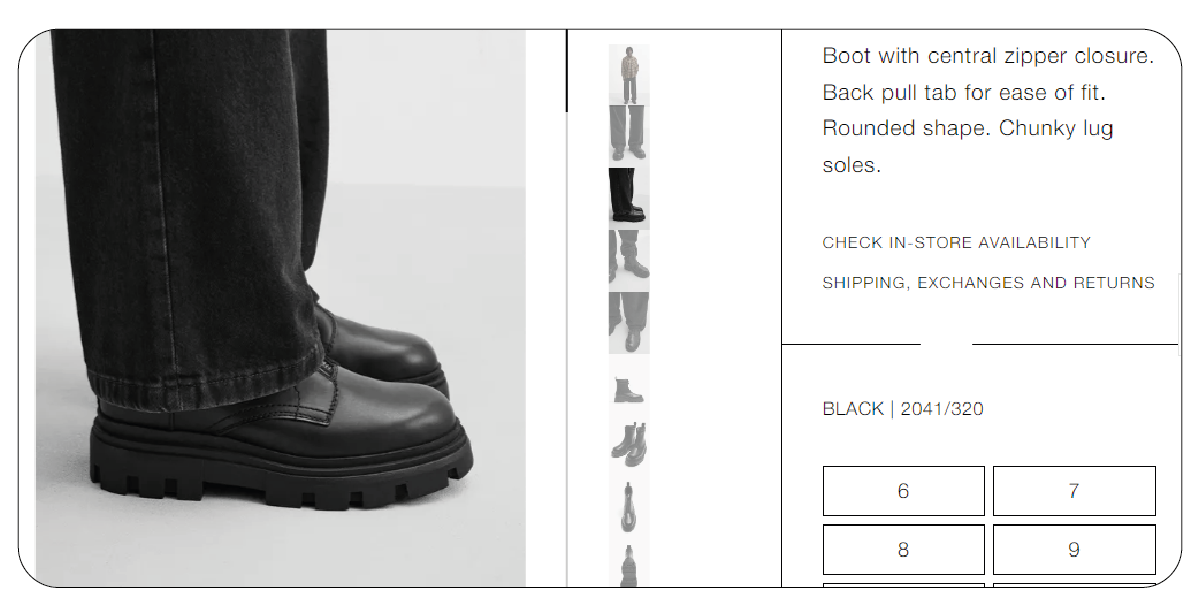
Understanding Zara's pricing strategy necessitates a thorough analysis of product price distributions. Analysts can discern patterns that provide valuable insights into the brand's pricing philosophy and operational tactics by examining how prices are structured across various product categories.
1. Price Range Across Categories: Zara's product portfolio encompasses various categories, including apparel, footwear, accessories, and home goods. Each category often exhibits distinct price distributions, reflecting different market dynamics and consumer expectations. For instance, essential items like t-shirts and jeans may be priced lower to encourage volume sales, while seasonal collections or high-fashion collaborations typically command higher prices.
- Apparel: Essentials are strategically priced within the apparel category to appeal to a broad consumer base and promote rapid turnover. Conversely, trendier pieces that reflect current fashion trends may carry a premium price tag. Analyzing the Zara dataset for clothing categories—casual wear, formal attire, and seasonal items—reveals how Zara balances affordability with exclusivity. This nuanced approach allows Zara to maintain its reputation for offering stylish, accessible fashion while catering to consumers willing to invest in limited-edition or designer collaborations.
- Footwear and Accessories: Footwear and accessories often showcase a broader price range, allowing for varied consumer preferences. Entry-leve items may be attractively priced to draw consumers in, while premium offerings reflect higher production costs and design intricacies. This tiered pricing strategy helps Zara cater to a broader audience while maximizing profitability. Analysts can track sales performance across these categories by leveraging eCommerce data collection services, providing deeper insights into consumer purchasing behavior and preferences.
2. Seasonal Pricing Adjustments: Zara's pricing strategy is notably responsive to seasonal trends and market demands. Older items often experience price reductions as new collections are introduced, allowing Zara to manage inventory efficiently while appealing to price-sensitive customers. Scraped data from previous seasons can reveal how pricing changes over time, highlighting the cyclical nature of fashion retail and the importance of strategic markdowns
- End-of-Season Sales: Zara's Pricing Response to Market TrendsZara's end-of-season sales are particularly telling regarding its pricing philosophy. Products not sold during their peak season often receive significant markdowns to clear inventory and make way for new collections. Analyzing pricing data during these periods can provide insights into how Zara perceives value, demand elasticity, and consumer behavior. Utilizing price monitoring services can enhance this analysis by providing real-time updates on price fluctuations, enabling more accurate forecasting and strategic planning.
3. Geographic Pricing Variations: Zara operates globally, and pricing can vary significantly based on geographic location. This geographic pricing strategy considers local economic conditions, currency fluctuations, and regional competition. Scraping data from different markets reveals how Zara tailors its pricing to fit diverse consumer demographics and purchasing power, enhancing its global reach.
- Regional Market Sensitivity: For instance, pricing in European markets may differ from that in the U.S. or Asian markets, reflecting variations in consumer income levels and purchasing habits. Understanding these geographical variations allows analysts to evaluate how Zara adapts its global strategy to local contexts, maximizing its appeal across different consumer bases. By integrating eCommerce product data into their analysis, stakeholders can understand how regional pricing affects overall brand performance, consumer satisfaction, and market penetration.
Zara's Pricing Response to Market Trends
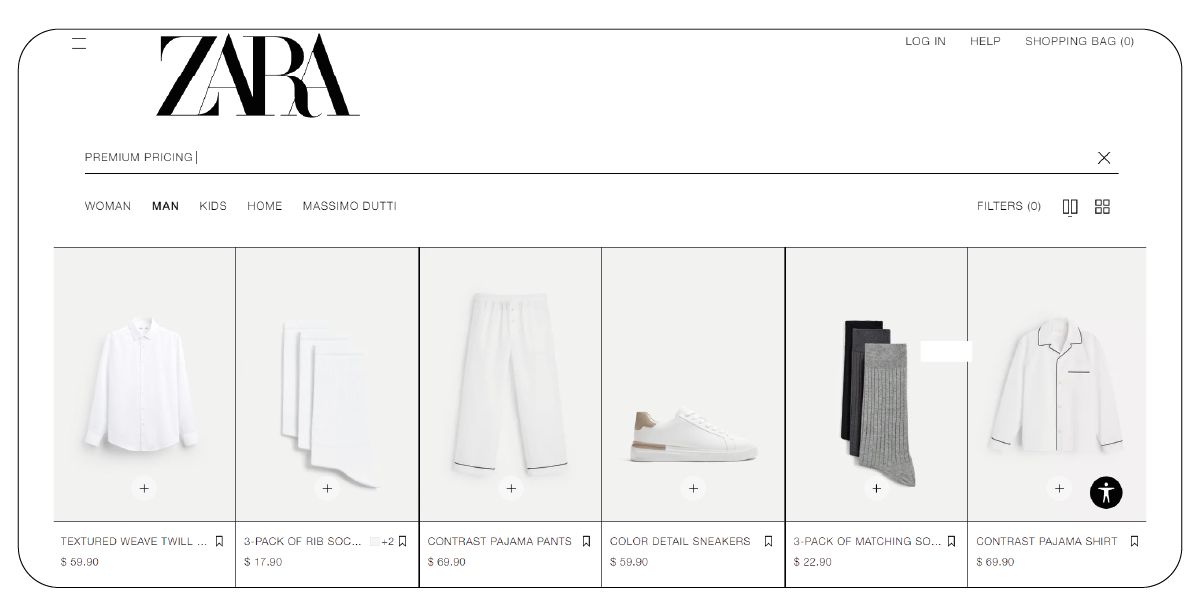
To illustrate the effectiveness of Zara's pricing strategy,
Scrape eCommerce Product Data considers the impact of market trends, such as the rise of sustainable fashion. As consumers increasingly prioritize sustainability, Zara has responded by integrating eco-friendly lines into its collections.
1. Premium Pricing for Sustainable Collections: Zara's sustainable collections are often priced at a premium compared to regular lines. Scraping pricing data for these specific products highlights how Zara positions itself as a leader in sustainable fashion while justifying higher prices through perceived value. This pricing strategy captures the attention of environmentally conscious consumers and aligns with broader market trends emphasizing corporate social responsibility
2. Data-Driven Decision Making: Zara's ability to leverage pricing data to inform its strategy cannot be overstated. By analyzing how sustainable items perform in terms of sales and consumer interest, Zara can make data-driven decisions about product launches, marketing efforts, and inventory management.
The Impact of Zara's Pricing Strategy on Brand Perception

Zara's pricing strategy has far-reaching implications for its brand perception. Consumers associate Zara with value and accessibility, believing they can obtain fashionable, high-quality items without breaking the bank. This perception is crucial for maintaining customer loyalty and attracting new shoppers.
1. Brand Loyalty and Consumer Trust: Zara's consistent pricing strategy fosters trust among consumers. Shoppers will likely return to Zara, confident they can find stylish, reasonably priced items. Moreover, by regularly updating collections and implementing sales strategies, Zara keeps the shopping experience fresh, encouraging repeat visits.
2. Perceived Exclusivity: While Zara aims for affordability, its limited production runs and frequent turnover can create an aura of exclusivity around specific items. This balance of price and scarcity can elevate consumer desire, increasing purchase urgency and fostering a sense of belonging among loyal customers.
Conclusion:
Scrape Zara product pricing data to offer insights into the brand's pricing strategy and product price distribution. Through competitive pricing, psychological tactics, and value-based approaches, Zara has established itself as a leader in the fast fashion industry. Analysts can better grasp the intricacies of Zara's market positioning by understanding how prices fluctuate across categories, seasons, and geographic locations.
Zara's ability to adapt to changing consumer preferences and market trends while maintaining a solid brand identity underscores the importance of a well-structured pricing strategy. As the fashion industry continues to evolve, the role of data in informing pricing decisions will only become more critical, paving the way for retailers to navigate the complexities of consumer behavior and market dynamics.
In conclusion, the analysis of scraped pricing data reveals not just numbers but also the underlying strategies that drive Zara's success in the competitive landscape of fashion retail. By continually refining its pricing approach, Zara remains poised to adapt to new challenges, ensuring its relevance in an ever-changing market.
At Product Data Scrape, we strongly emphasize ethical practices across all our services, including Competitor Price Monitoring and Mobile App Data Scraping. Our commitment to transparency and integrity is at the heart of everything we do. With a global presence and a focus on personalized solutions, we aim to exceed client expectations and drive successs in data analytics. Our dedication to ethical principles ensures that our operations are both responsible and effective.






 To illustrate the effectiveness of Zara's pricing strategy,
To illustrate the effectiveness of Zara's pricing strategy, 



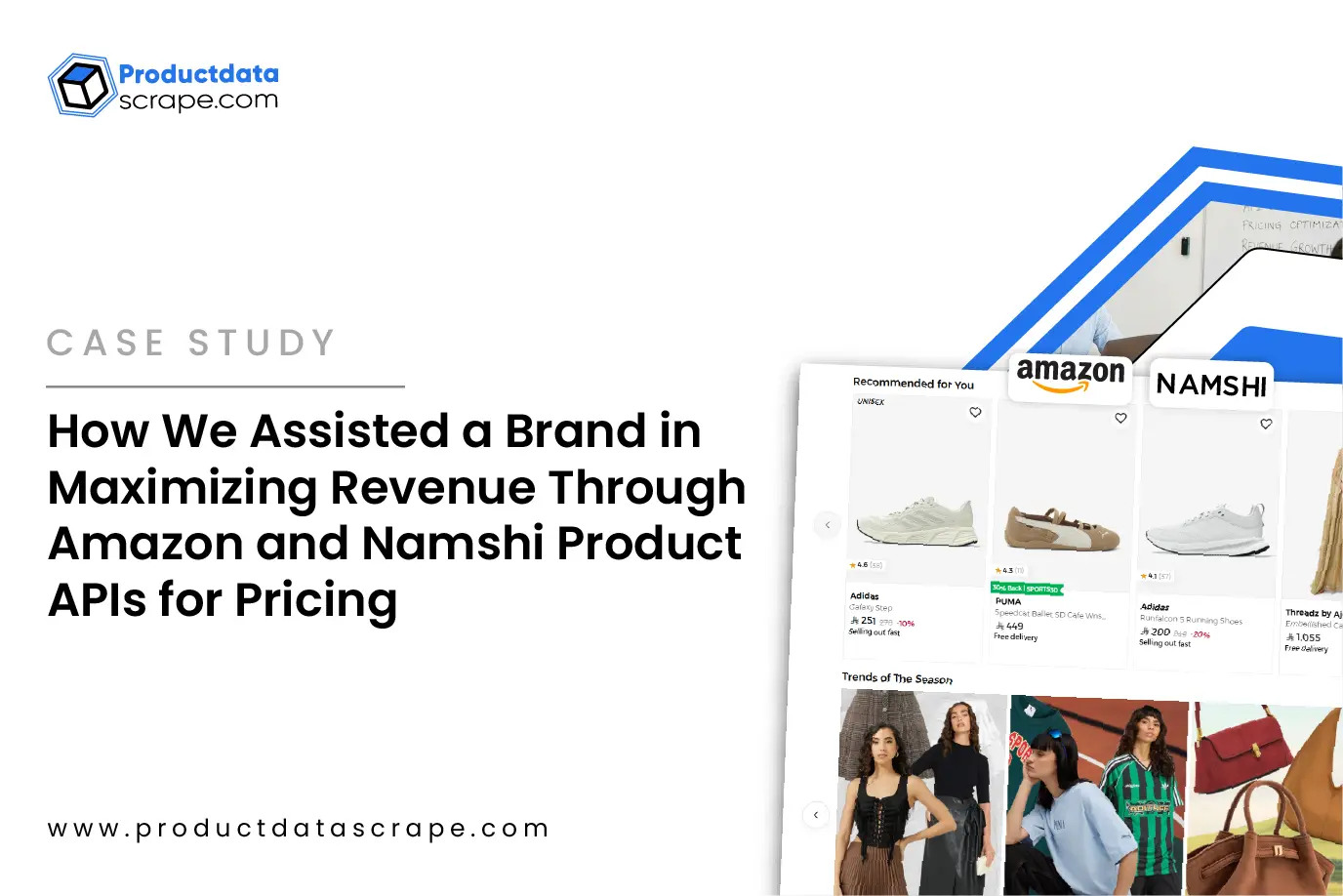









.webp)




.webp)
.webp)
